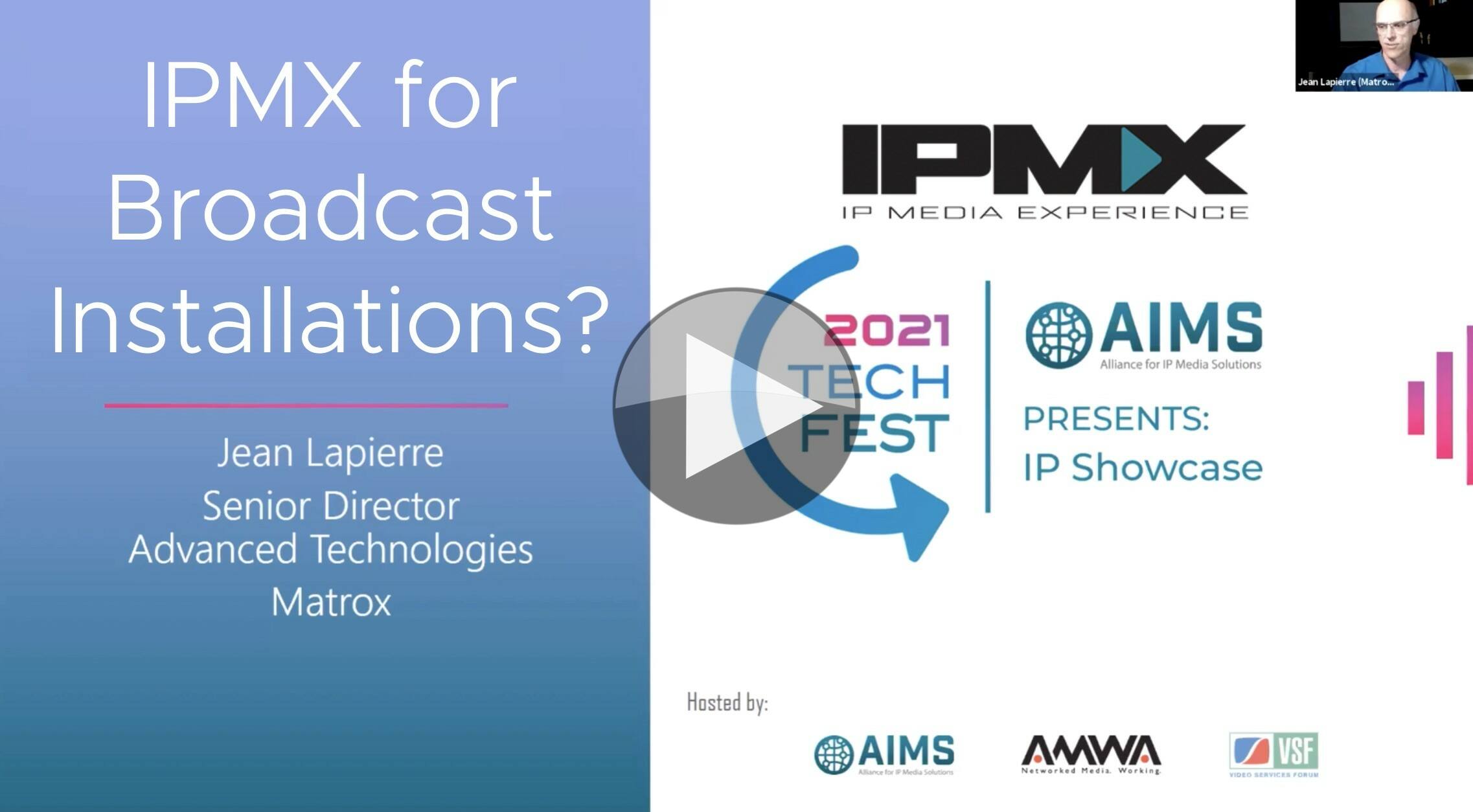IPMX, the new ProAV IP challenger spec, is taking shape promising to tame SMPTE’s ST 2110 standards, make PTP useable and extend AMWA into managing HDCP. Is this a tall order and can it actually deliver? Taking us through the ins and out is Jean Lapierre from Matrox.
With or without IPMX, ProAV is moving to IP whether with SDVoE, ZeeVee or something else. There are a number of competing technologies, but we hear from Jean that IPMX is the only software-defined one. This is important because if you don’t require a chip to be an IPMX product and participate in ProAV workflows, then anything can support IPMX such as PCs, Laptops and mobile phones.
IPMX based on RTP, ST 2110, ST 2059 PTP and AMWA specifications IS-04, IS-05, IS-08 (audio channel mapping), IS-11 for EDID handling as well as NMOS security and best practice guidance. This seems like a lot, but to cover media transfer, registration, control, security and interfacing with display screens, this is the range of tech needed.
Compared to SMPTE ST 2110, the PTP profile is easier to deploy and produces less traffic, explains Jean, and IPMX even works without PTP which support for asynchronous signals. Support of HDCO is included along with a lower-latency FEC mode for those that find 2022-7 too costly or impractical to deploy. Lastly, Jean points out that thanks to the in-built support for JPEG XS, IPMX can support UHD workflows within a 1GbE infrastructure.
Jean continues by discussing the compatibility between 2110 and IPMX. In principle IPMX and 2110 senders and receivers are interchangeable. Jean goes into more detail, but the example would be that IPMX is managing the HDCP encryption of the source using AMWA NMOS IS-11. IS-11 is, naturally available to be used with any other technology including ST 2110. If it’s adopted, then HDCP-protected material can flow between the two systems.
Watch now!
Speaker
 |
Jean Lapierre Senior Director, Advanced Technologies, Matrox |


